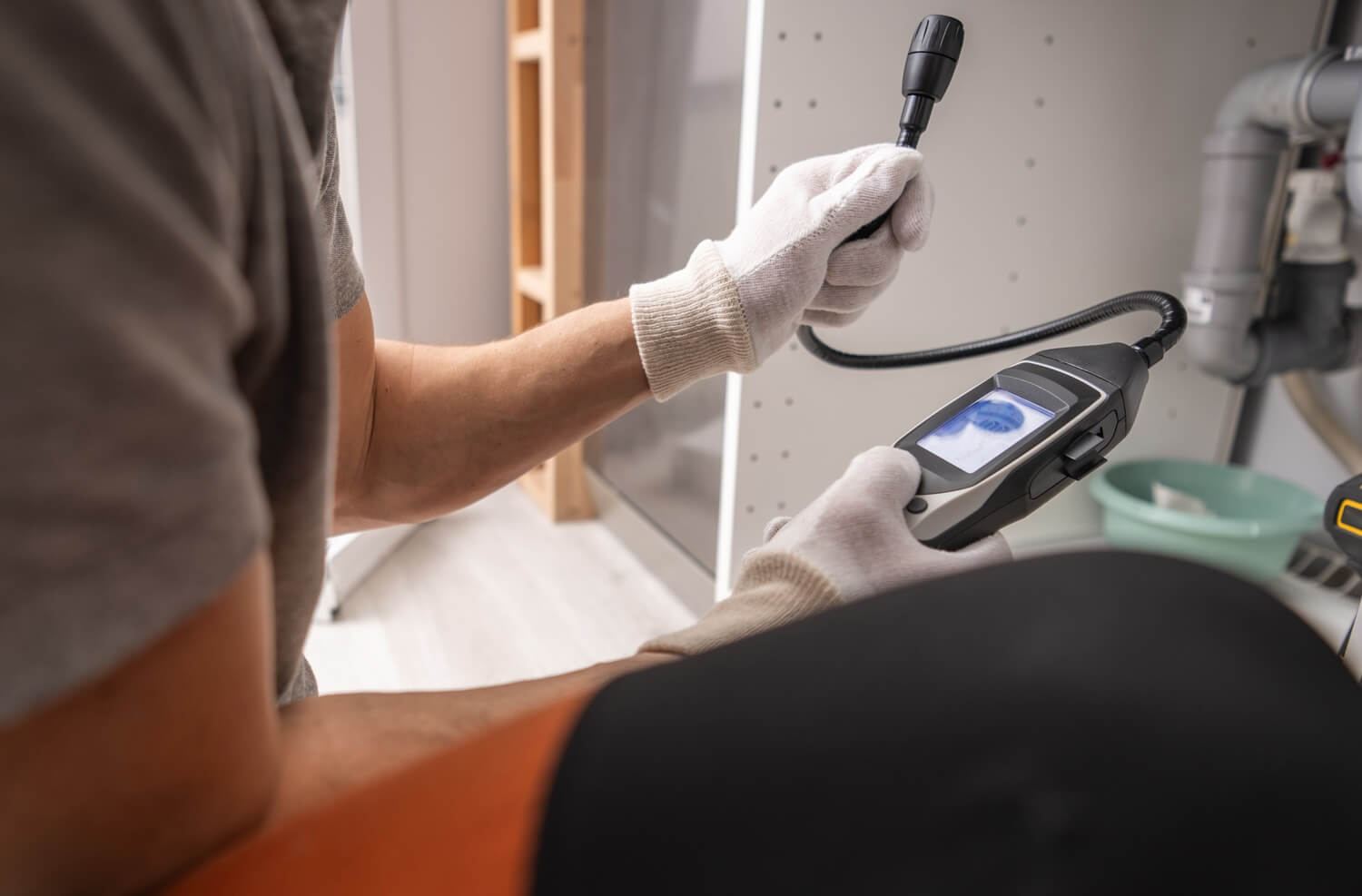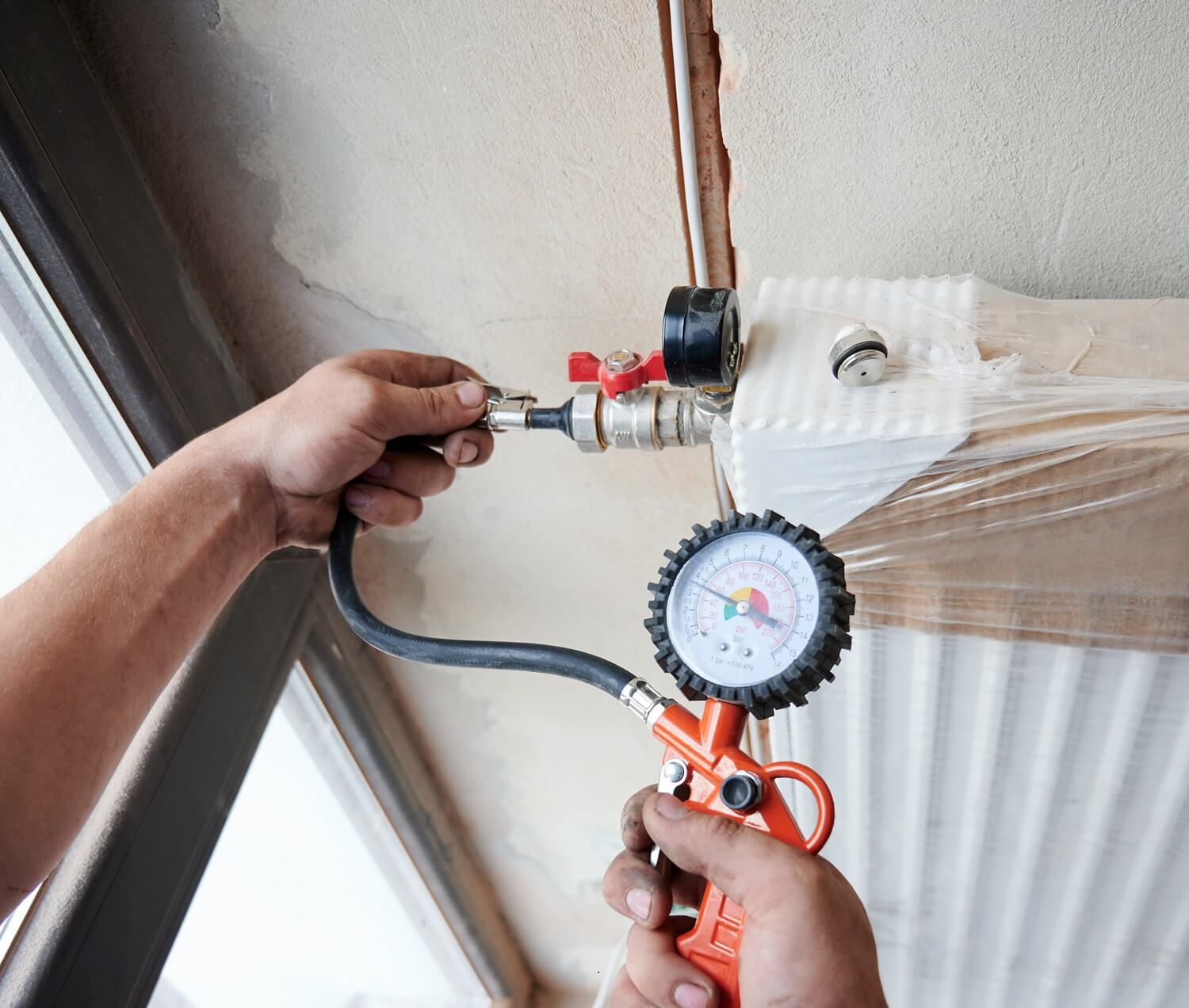Why Is Maintaining Residential Gas Lines Important?
- Home
- Maintaining Residential Gas Lines: Installation, Depth, Size, & Pressure Testing
Recent Posts
- Sewer Gas Smell in the Bathroom: What Causes Sewer Gases From Toilets and How to Fix It
- How to Drain an Overflowing Toilet Bowl
- Your Hot Water Smells Like Rotten Eggs? Causes and Solutions for Sulfur Odor in Water Heaters
- How to Do a Gas Line Pressure Test: Steps, Precautions & Safety
- Aluminum or Magnesium Anode Rod for Water Heater: Which to Choose
Dinomite Services

For homeowners, ensuring the effectiveness and safety of domestic gas lines is crucial. An essential energy source, natural gas is utilized widely for cooking, heating, and running different equipment in the home. However, to avoid any risks, it has to be carefully maintained and managed.
We will examine important topics, including the installation procedure for domestic gas lines, depth considerations, size, and pressure testing in this extensive guide, which delves into the crucial significance of maintaining residential gas lines. A safe and effective gas system in a house may be ensured by homeowners by being aware of these components.
About Residential Gas Lines
The pipes that ship natural gas from the main supply lines into residences are known as residential gas lines. They are essential in providing this energy source to a variety of appliances, including dryers, stoves, water heaters, and furnaces. Maintaining these lines is not just a question of convenience but also of safety and regulatory compliance due to the vital roles they play.
Why Maintenance is Essential
Residential gas line maintenance is essential for a number of reasons:
Safety: There is a significant danger of explosions or carbon monoxide poisoning when a badly maintained gas line leaks.
Efficiency: Gas delivery is made more efficient by routine maintenance, which also lowers utility costs and energy waste.
Longevity: Gas lines and the appliances they support have a longer lifetime when properly maintained.
Compliance: Local building laws and insurance policies often demand adherence to upkeep requirements.
How Deep Are Residential Gas Lines Buried?
The question “How deep are residential gas lines buried?” is one that many homeowners have. Depending on local laws and the particular needs of the installation location, the depth at which gas lines are buried might vary. Residential gas pipes are often buried between 18 and 24 inches below the surface. This depth lowers the chance of unintentional harm by shielding the lines from surface activity and outside influences.
Certain burial depths are often required by local rules to guarantee compliance and safety. For example, gas lines may be buried deeper in colder climates to prevent frost-related problems. To find out the precise regulations in your region, it is imperative that you contact your local authorities or a professional gas contractor.
Residential Gas Line Size: Getting It Right
An effective and secure gas supply system also depends on the size of the residential gas line. The gas line’s dimensions must correspond to the demands of the domestic appliances it supplies. Insufficient gas delivery from a too-small pipe might result in subpar operation and other risks. On the other hand, installing a bigger line may be more expensive and inefficient.
Factors that determine residential gas line size include:
BTU Load: The total BTU (British Thermal Unit) load of all gas appliances defines the gas line size. Each appliance has a certain BTU rating, which jointly controls the total demand.
Distance: The length of the gas line from the meter to the appliance also impacts the size. Longer lengths may need bigger diameters to provide enough gas flow.
Pressure: The gas pressure available from the supply and the needed pressure at the appliance must be considered.
Consulting with a competent gas technician is crucial to identify the right residential gas line size for your house.
The Importance of a Residential Gas Line Pressure Test

Residential gas line pressure test is required prior to putting a gas line into service to make sure there are no leaks, and the system can safely manage operating pressure. This test, which is often mandated by building rules, is essential for confirming the integrity of the gas line installation.
A residential gas line pressure test entails these steps:
Sealing the System: To establish a closed system, the gas line’s ends are all sealed.
Pressurizing the Line: The line is brought to a certain pressure, often greater than its typical working pressure, using air or an inert gas.
Monitoring: To look for any dip in pressure that would point to a leak, the pressure is watched for a certain amount of time, usually 15 minutes to several hours.
Inspection: A certified gas specialist or inspector confirms the test findings and makes sure all safety regulations are being followed.
One of the most important steps in guaranteeing the dependability and safety of your gas system is to conduct a residential gas line pressure test.
Endnotes
One cannot stress how crucial it is to maintain residential gas lines. The safety, effectiveness, and lifespan of your home’s gas system are greatly impacted by every facet of gas line maintenance, from making sure the right size residential gas line is used to knowing how deeply residential gas lines are buried. Prioritizing critical measures like pressure testing, routine inspections, and timely repairs is recommended for homeowners.
Homeowners may safely and effectively benefit from natural gas, giving them peace of mind and a functional house by being knowledgeable and proactive. The objective is always the same, whether it is accomplished by contemporary technology or expert services from Dinomite, Texas: to maintain our houses secure and gas lines in good working order.

